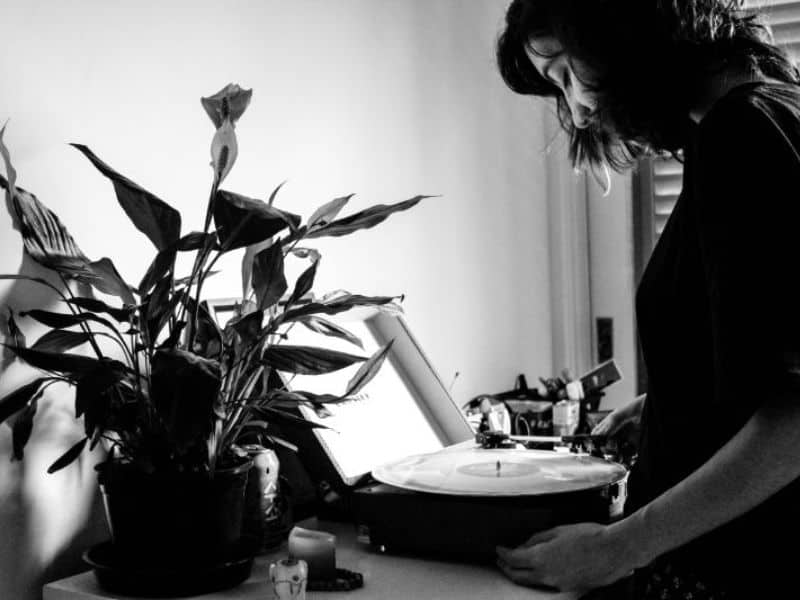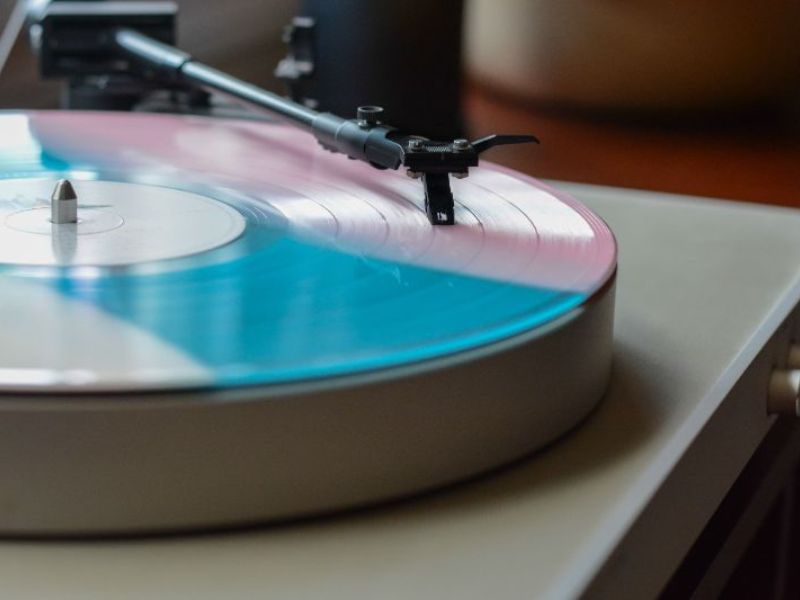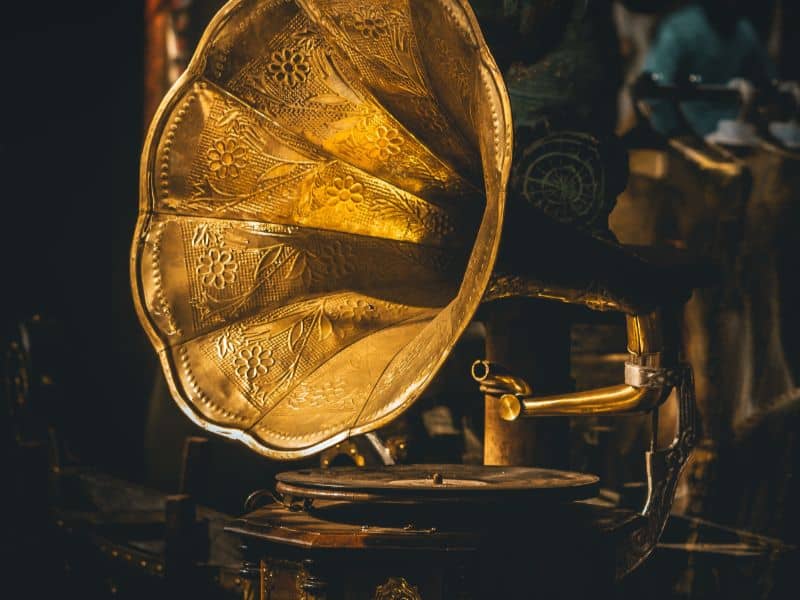1. How Do Record Players Actually Work?
At face value, a record player seems simple, but these revolutionary devices are far from simple. They incorporate a technology that utilises grooves on every record. These tiny grooves cannot be seen by the eye but are in every single ridge of vinyl.
Each vinyl has its own unique sequence of grooves, and when the turntable needle is placed on the vinyl, it tracks this sequence as the record player spins the LP. This causes the needle to vibrate into the grooves as the vibrations are turned into sound waves, amplified by the record player.
Vinyl and record players offer a completely different music listening experience than putting on some Spotify generated playlist or getting handed the AUX cable at a party you would rather not be at. Vinyl is a whole experience: it’s raw and vibrant, soulful and transient. They are intricate in design and offered a revolutionary method of listening to music in their heyday.
Not only was the technology revolutionary, it completely changed the music industry landscape, setting the tone for further musical developments that utilised similar technology such as the CD and the tape.
Record players require you to commit to the whole process of sticking an LP on and actually listening to it – start to finish, something that is lost in today’s streaming climate. It is perhaps this or its kinda cool looking vibe and hipster effect using it purely for an aesthetic that has brought such a resurgence to this once extinct musical experience.
2. How Do You Use A Record Player?
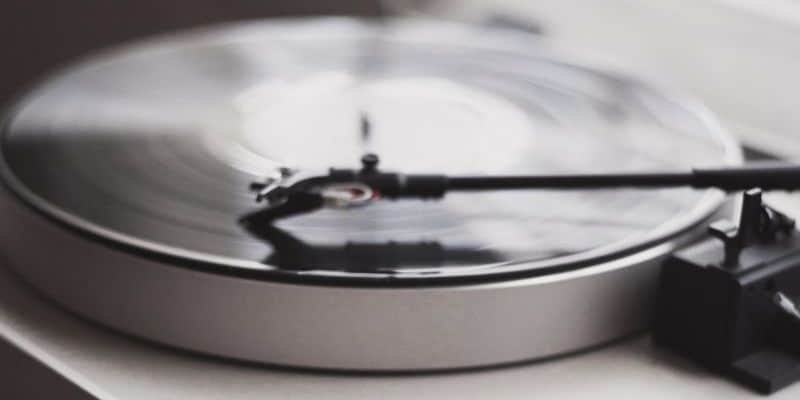
Whilst record players are by no means hard to use, they do require a bit more finesse than the likes of Spotify:
- You want to handle every vinyl at the edges to avoid dust-build and scratches on their surface.
- Then it is a case of simply lining up the hole in the vinyl with the record player, placing the turntable needle at the very outer edge of the vinyl (making sure not to scratch the needle across it in the process)
- Choose the appropriate speed.
- The player will typically start rotating when you lift the needle, which will emit your favourite tunes as soon as it hits these great black discs.
- When you get to the end, vinyl often has the second half of the album on the other side, which is just a case of quickly turning it over or reversing this process to finish with the player. Easy!
3. Simple Care Tips For A Record Player And Vinyl Alike
When it comes to your record player, one of the most essential things to bear in mind is your needle’s condition. The turntable needle will start off very sharp, and it is this that gives the vinyl a crisp, clean sound.
This sharpness, however, can be problematic in terms of scratching the vinyl. Being careful and mindful when placing down your needle is a must.
Additionally, just like a pencil (remember them?), the needle will go blunt over time. When blunt, it will need replacing, and you can tell straight away as it will cause the vinyl to be crackly and distorted. A blunt needle can damage the vinyl as much as a sharp needle can, so it’s essential to keep on top of this.
When it comes to vinyl, you want to make sure that you have an excellent place to store them, look after them by returning them to their sleeves and don’t scratch them. Once they are scratched, you start missing bits of songs, or the sound is all wrong as the damage affects those all-important grooves we were on earlier.
4. Manual vs Automatic
When buying a record player, considering whether you want a Manual or an Automatic player can be a significant factor in your decision.
- Automatic sees the player place the needle on the vinyl itself with the press of a button. This avoids any potential for damage.
- However, most of the better record players and the high-end players use Manual needles, requiring them to place the needle onto the vinyl themselves. It’s easy and quick to get the hang of but can be nerve-wracking at first.
It might be worth investing in an automatic player if you have a shaky hand; you don’t want to ruin all your LPs.
5. Belt Drive vs Direct Drive
Deciding whether you want a player with a belt drive vs a direct drive is a decision splitting audiophile and DJ camps for years gone by. The Direct drive means the motor is directly connected to the platter and spins it automatically this way, allowing for easy change of records and quick access to vinyl – perfect for a DJ.
On the other hand, Belt drives separate the motor and the platter and instead connect them using a belt. This is often preferred by audiophiles as it produces a crisper and smoother sound with less audible vibrations. When it comes to buying a record player, you will have to work out if you are an audiophile or a DJ; it can be a tough decision, let me tell you!
6. Vinyl Sizes And Speeds
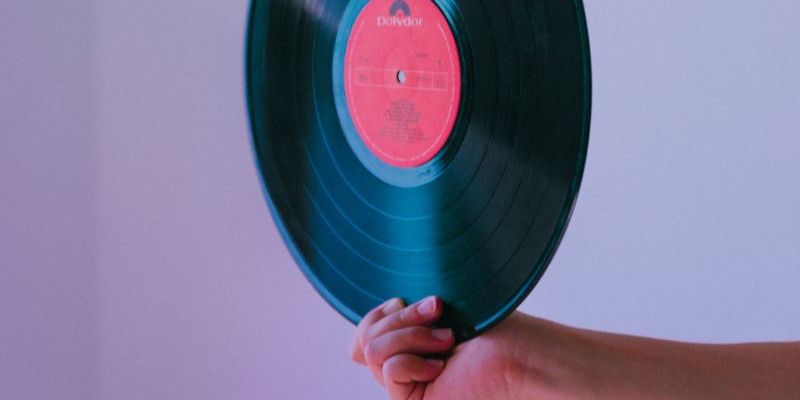
Not every vinyl is the same size and rotates at the same speed. But most record players cover both of the main sizes. Turntables often come with a button or setting that allows you to change which speed you intend to turn the player. Vinyl is more often than not split into two groups:
- 7″ vinyl records can store 5 minutes worth of music on them and are often used for singles. This vinyl usually rotates at 45 RPM.
- 12″ vinyl records can store up to 22 minutes of music on them and are often used for albums. This vinyl usually rotates at 33 RPM.
Interestingly, there is another vinyl setting that sees the need for an extra speed setting. These records are unusual and tend to only be from musical content pre-1950.
- They are 10″ vinyl operating at 78 RPM, but they often cannot play these records as they are that unusual.
Generally, you only need to worry about the more minor records or, the bigger ones and making sure you have the right setting on for both of them, and your player can play both of them. If you are a true, original music fan, you may need to incorporate 10″ compatibility into your record player search, but these turntables are often high-end or unique and hard to find.
7. Does Your Record Player Have An In-Built Speaker Or Not?
Ironically, the more you pay for record players, the less chance you will get speakers built into your system. The cheaper the record player, the more likely it that they have built-in speakers. But if you want to get the authentic feel and experience from your record player, you will have to invest in a good set of speakers.
The built-in ones are nothing short of rubbish and make for a distorted music listening session. Speakers can make the worst sound and the best better. There are many types of speakers, but we have found that bookshelf speakers paired with mid-tier record players are an excellent combination for the best album experience.
8. Connectivity
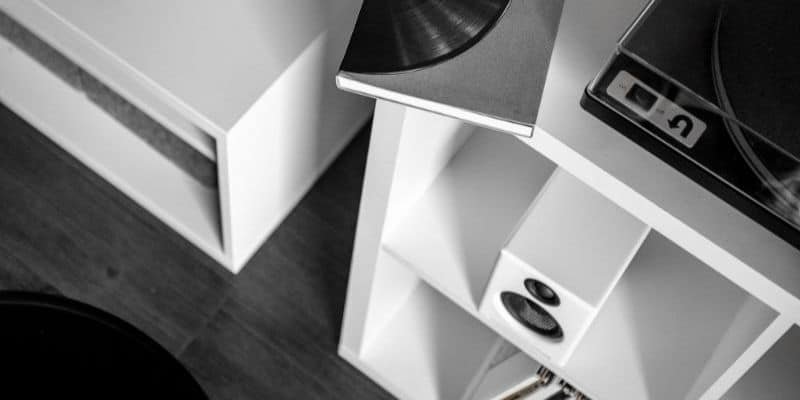
Connectivity is such a massive part of modern technology, and record players are no exception to this. Many want to be able to hook all their devices up simultaneously. If you are one of these people, you will have to look at whether you want an analogue or digital record player with built-in USB connectivity.
If you opt for an analogue turntable, you will be keeping those sweet vinyl records in a world of their own, far away from the mobility and connectivity of modern technology.
If you would like to connect old with new, you should look to invest in a digital turntable with USB connectivity to connect the player with other technology and allow for burning and playback in digital form – this would allow you to download those vinyl, crackles and all, to your phone.
You may also need to get yourself an additional phono preamp. These little bits of kit allow for record playback – particularly when you connect speakers or headphones through a jack.
The preamp brings the quality of sound up to standard and will convert the vinyl for use in speakers and headphones, assuring quality and ability to project. Most budget turntables will include this in their setup but if you want to get serious about the vinyl game buying a record player without the preamp allows for improvement and additions to the system later on down the line.
9. How Upgradable Are Record Players?
You can nearly upgrade any part of record players. Beginner, budget players will come with everything equipped, whereas higher-end models actively insist on gradually upgrading components to get the best system.
This can be anything from the needle, which everyone will end up needing to replace (after roughly 1000hrs of play) to the platter, motor and tonearm upgrades for that increased sound quality. Nowadays, the vast amount of options are perfect for audiophiles who have an insane selection of improvements they can make to their setup.
10. The Aesthetic
When it comes to record players, if anyone in this day and age tells you that they didn’t consider the aesthetic a significant component of why they have a record player, they are lying. They are cool. Starting off as a bit of a weird hipster fad resurgence, these excellent musical devices have managed to have a massive revival into the mainstream. Rightfully so.
Placed in the right area and connected to the right speakers, record players can be a fantastic aesthetic from your next dinner party or pre-drinks, or even for a solo night in your bedroom.
They offer a completely different musical experience to the more modern style of listening to music, and for that, we commend them. Taking it back to basic and respecting the art more.
Rounding Things Up
Hopefully, these helpful tips should help you when buying your first or next record player in that very competitive market and know exactly what you need to look out for. Considering all of the points made above will arm you with good knowledge to take with you next time you go shopping for your dream turntable.
